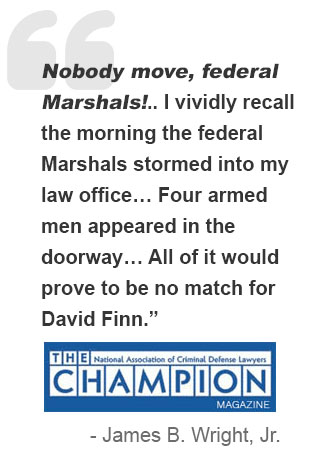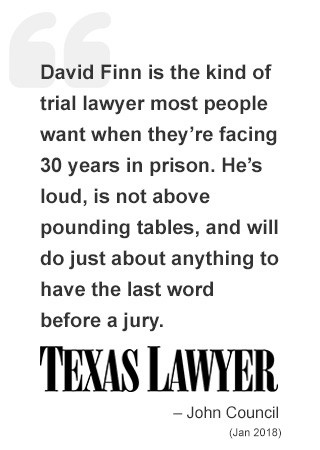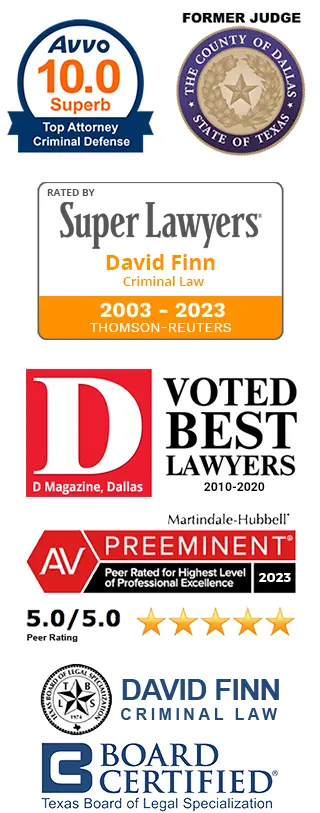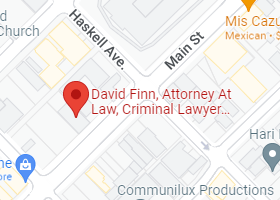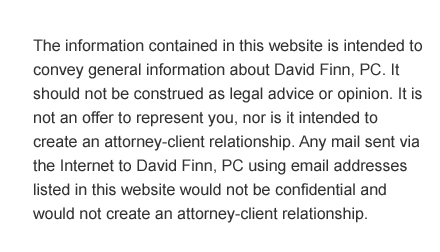

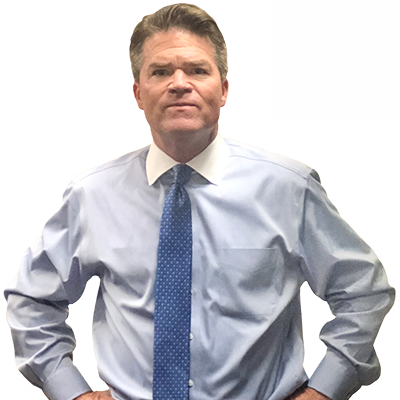
Dallas Observer Story: Brady v. Maryland
Blogger note:
Dear Bill, perhaps you were having a senior moment. Let me see if I can refresh your recollection: your office on the 11th floor, face-to-face meeting. That’s right, I knew you hadn’t really forgotten what you said to me. I will give you credit though, you appear to have learned a few things in retirement. You actually returned a reporter’s phone call, and you got in a pretty witty dig on yours truly. Salud mi amigo!
Your Pal,
David
A Devil’s Deal in Dallas Court
A terrible crime plus skaky evidence tempts prosecutors to play a secret game of “let’s make a deal”
By Glenna Whitley
Published: September 27, 2007
Dallas Observer
When Gerald Pabst took the witness stand to testify against his brother-in-law, he looked scared. He was literally shaking. Yet he answered the prosecutor’s questions in a soft, even tone that didn’t fit the gruesome details of the murder.
It was all the fault of Clay Chabot, Pabst said. At dawn, after the two men spent the night boozing and doing meth together, Chabot had dragged Pabst along to get compensation for a bad drug deal. The speed-fueled escapade had ended with Chabot killing the dealer’s wife. Pabst said he’d obeyed Chabot’s orders because he’d been threatened.
A peripatetic painter who spent a lot of his non-working life face-down drunk, Pabst appeared remorseful for his role, determined to tell the truth about the 1986 murder of Galua Crosby no matter the cost to himself. Pabst, who, along with Chabot, had been indicted for Crosby’s murder, testified that he expected to be tried for the crime himself at some point. Under repeated questioning by the judge and Chabot’s attorney, Pabst insisted he’d made no deal with the prosecution in exchange for his testimony.
Attorney and former judge Kelly Loving, who thought of Pabst as the “Pillsbury Doughboy,” could see the effect his tubby client had on the jury. They believed every word Pabst said.
Chabot later took the stand in his own defense, denying any role in Crosby’s death and blaming Pabst. But Chabot, a wiry and wired ex-military man, came off as a cocky, unemployed speed freak who jurors could readily imagine getting pissed off over a drug debt and exacting revenge by raping Crosby and shooting her three times in the head.
Classic courtroom drama: Two scumbags pointing the finger at each other. Each man could explain away the scant physical evidence linking him to the crime. Yeah, Pabst pawned the woman’s boombox. But as Dallas Assistant District Attorney Janice Warder would hammer home, the murder weapon belonged to Chabot, who claimed Pabst had stolen it.
The jury believed Pabst, convicting Chabot and sentencing him to life in prison.
But what they didn’t know was that the prosecution had a secret arrangement with Pabst in exchange for his testimony. Though Crosby’s family believed Pabst had gone to prison, two days after Chabot’s conviction, he pleaded guilty to misdemeanor theft of the boombox and walked free. Less than a slap on the hand.
This spring Clay Chabot’s conviction became one of the latest DNA cases to bring shame to the Dallas County District Attorney’s office. Pabst had played everyone involved in his prosecution for fools, and, in turn, they helped him deceive the jury.
The “Pillsbury Doughboy” failed to mention that he had sexually assaulted Crosby, a fact revealed this spring by a DNA test on a vaginal swab. The test ruled out any involvement in the rape by Chabot, who has maintained his innocence since he stepped inside the penitentiary.
Janice Warder, a well-respected prosecutor who became a state district judge in 1992, had made a “no-deal deal” with Pabst—or so it became clear when Chabot’s conviction was appealed.
“You testify and I’ll do the fair and just thing,” Warder told Pabst and Loving, according to her later testimony in federal court.
According to interviews with defense attorneys and former prosecutors, such “nod-and-a-wink” deals were common practice in the Dallas District Attorney’s office in the ’80s and ’90s under district attorneys Henry Wade, John Vance and Bill Hill. The attitude was that, if not written down, if not an explicit quid pro quo, such arrangements did not have to be disclosed under the so-called “Brady rule,” which required all exculpatory evidence be turned over to the defense.
“They say, ‘You have to trust us, and you won’t be displeased,'” says Randy Schaffer, a Houston attorney who handled part of Chabot’s appeal. “‘We have an understanding, but we have no deal. Your client is doing this to be a good citizen.'”
Under District Attorney Craig Watkins, such prosecutorial tactics are being re-examined in the light of 14-and-counting DNA exonerations in Dallas County. The issue has drawn national attention: A crew from 60 Minutes filmed Watkins’ presentation earlier this month for law students working with his office and the Innocence Project at Texas Wesleyan Law School. They will be screening more than 450 requests from offenders for DNA tests.
Dallas public defender Michelle Moore worked with some of the 10 exonerees who attended the seminar. She’s also coordinating the DNA screening student project. Some things have already changed, Moore says. “The DA’s office used to fight everything,” Moore says. Under Watkins “they are more open to tests.” A week after the seminar, Watkins announced that Steven Phillips, convicted of a 1982 sexual assault, did not commit that crime. An admitted peeping tom, Phillips remains in prison on other charges.
Many defense attorneys regard unwritten deals such as the one employed in the Chabot case as deceitful.
“It’s egregious, unethical and illegal,” says one Dallas defense attorney, who asked not to be identified. But she says the tactic is used routinely so the prosecution can avoid any taint on their witnesses’ credibility.
In the Chabot case, the non-deal helped Pabst to come across as the truth-teller, even though Warder technically had promised nothing. And it helped Pabst sell Warder, the judge, the jury and his own defense attorney a whopper.
The allegations that Dallas prosecutors have often refused to disclose “non-deals” and other exculpatory evidence get strong reactions, but the responses can be put into two camps: former prosecutors who say it was rare, and defense attorneys who say it happened all the time.
“Sending an innocent man to prison is a prosecutor’s worst nightmare,” says a former Dallas attorney who now works as a prosecutor in another county. “The code of ethics for prosecutors says their job is to see that justice is done. But in some cases, they’ll tell themselves when they go to bed at night, ‘He may not be guilty of this, but he’s guilty of something.'”
Warder maintains there was no deal and that she did, in fact, disclose all exculpatory evidence, but her own paperwork tells another story. Faced with a heinous crime and two scumbags, did Warder make a deal with the wrong devil?
After taking the bench in a Dallas family violence court in 1999, state District Judge David Finn says he was surprised to discover young prosecutors withholding evidence from the defense.
Finn started his legal career in 1992 as a prosecutor in Tarrant County and then worked from 1995 to 1997 as a federal prosecutor in Dallas. Both offices had an “open file” policy; Finn says prosecutors there understood that withholding evidence was a firing offense. The attitude was “we play hard, we play to win, but we’re not going to cheat,” he says.
Since Henry Wade’s era, the Dallas District Attorney’s Office had a closed file policy, which continued under Bill Hill, who became district attorney in January 1999.
Defense attorneys complain that some prosecutors made it very difficult for them to get anything, even police reports, witness statements, the results of forensic tests and criminal histories of witnesses. Finn says the practice was so widespread he instituted a policy of asking prosecutors before seating a jury if there was any evidence that needed to be disclosed.
When Finn asked the question of two young female prosecutors before a domestic abuse case, they assured him there was none and announced they were ready for trial even though they had been unable to locate the victim in the case; the wife had moved out of state. They presented police officers as witnesses who repeated what the accuser had told them and then rested their case.
Then the defense brought in its surprise witness: the out-of-state wife, who told the judge that not only had she told prosecutors she had made up the accusations against her husband, she had signed an affidavit of non-prosecution.
Neither piece of information had been turned over to the defense, the prosecutors told Finn, because they thought the victim was lying.
“Their thinking was they didn’t believe her, so it wasn’t Brady material,” Finn says. “That is not the legal standard. Brady has been on the books 45 years. They don’t get to decide what they believe and don’t believe. I’m thinking either I’m just nuts or coming from a completely different universe.”
An experienced fellow judge recommended that Finn take his concerns to then-District Attorney Bill Hill. “I’m sure he would want to know,” the judge told him.
According to Finn, Hill brushed him off. “This system has been in place for many years,” Hill supposedly said. “Let’s make a deal—you stick to judging and I’ll stick to prosecuting.” (Hill says this conversation didn’t happen and isn’t true. Finn left the district attorney’s office in 2002 to run against Hill for district attorney and lost. “It sounds to me like David Finn is still smarting over the fact I beat him by over a two-to-one margin when he ran against me for district attorney.”)
Finn claims that when he started defending clients, he noticed a different but, in his opinion, no less unethical tactic. “If the state stumbles across something explosive, they will ‘bury the lead,'” Finn says. “Let’s say your eyewitness says, ‘I’m not sure if that guy did it or not. It may have been his cousin.’ An honest person would disclose this. Instead, [some] prosecutors would say, ‘Hey, I’ll drop one of the three charges. No, I’ll drop two.’ What do you think most defense attorneys will do? Go yeah!”
The client would plead guilty and get a much-reduced sentence. The prosecutor would get a conviction without going to trial. And the defense attorney would look like a miracle worker.
Manipulation of witnesses was also a problem. Defending a young black ex-con on an aggravated robbery charge in 2002, Finn was able to show that Dallas police had tainted the victim’s identification of the perpetrator by parading his client in front of the victim in handcuffs, then later putting him in a photo lineup.
The client insisted he was innocent; after investigating further, Finn believed he was telling the truth. But in a hearing on the issue, the judge refused to toss the ID, saying he’d let the jury decide.
After the ID hearing, Finn noticed that the prosecution’s plea offers started dropping like maple leaves in October, from 25 years to 15, 10 and then five. The morning the trial started, prosecutors asked Finn if his client would take five years deferred adjudication—meaning he wouldn’t have to serve any time if he kept his nose clean from this point forward. Finn told his client he’d be crazy to say no, but the man refused, insisting he was innocent.
Realizing the prosecution was dancing around the identification issue during its presentation, Finn went with his gut. While cross-examining the victim, a Hispanic man who had been shot in the butt by his assailant, Finn asked, “You don’t know if this is the guy who shot you, do you?”
“No,” the victim said.
“And you told these prosecutors that the last time you were here?” Finn said.
“Yes.”
The man was acquitted, but Finn says nothing happened to the prosecutors. “That was the culture,” he says. “If you don’t pay a price to cut corners and cheat, then you keep doing it. If you do that as a prosecutor, what do you think you are going to do as a judge?”
Judge John Creuzot, hired as a prosecutor by Henry Wade in 1982 and appointed to the bench in 1991, believes prosecutorial misconduct is rare. But he has seen another factor at work: the belief that prosecutors are the “victims’ lawyers.” And victims deserve their day in court.
“If the complaining witness says, ‘He did it,’ there was an attitude of ‘We’re going to try it and let the jury sort it out,'” Creuzot says. “There was a strong, strong, strong bias to take it to trial.”
Creuzot had several cases he refused to prosecute. One involved a little boy who was allegedly a victim of sexual assault. “He came, his mother came, his siblings came” for the interview, Creuzot says. “There was a guy in the corner with boots and a big cowboy hat. I asked the little boy, ‘Did he do this to you?’ He said no, and his mother kicked him.”
When Creuzot said he couldn’t prosecute the case, the cowboy stood up and said, “I know Henry Wade.” The case went to trial, prosecuted by another assistant district attorney.
As a judge, Creuzot has seen young lawyers who failed to turn over exculpatory evidence because they didn’t know the rules. He’s also seen a few experienced prosecutors who “flat-out refused.”
During Vance’s tenure, one prosecutor told Creuzot that he didn’t want the defense lawyer to have a certain piece of evidence because he would “work a defense around it.” Creuzot excluded the material and told the prosecutor he couldn’t use it. “He was not inexperienced,” Creuzot says. “I told him afterward, ‘You’ve lost your mind.’ That baffles me to this day.”
In a child abuse case, a prosecutor told Creuzot she hadn’t turned over a particular piece of evidence because she was looking after the best interests of the child.
“I said, ‘You are an attorney, and you must follow the rules,'” Creuzot says. “She’s a good person and a great lawyer but in this particular case lost sight of what was going on. Sometimes people have been in there too long, and they lose objectivity.”
Facing potential jurors for her first jury trial, a nervous Janice Warder stood in front of several dozen citizens and said exactly the wrong thing.
“The defendant is presumed guilty…” Warder announced before catching herself. In a later bio, Warder told the story of her Freudian slip, saying, “It broke the ice, and with that case I got hooked on trial law.”
When she arrived in the competitive Dallas District Attorney’s Office in 1980, Warder stood out among the other neophytes as older and wiser. Married at the age of 17, Warder had taught high school and managed a business office before going to SMU law school. After graduating, Warder took a professor’s advice and went to work for legendary District Attorney Henry Wade.
Quickly promoted to chief felony prosecutor, Warder earned respect for her professionalism. During her 12 years at the district attorney’s office, Warder handled about 250 jury trials, including three death penalty cases. Elected to the bench in 1991, Judge Warder presided over high-profile trials such as that of former priest Rudy Kos. She later received kudos for her handling of the DIVERT Court, a model drug treatment program, which she did after hours. A TV news series named her Dallas’ “hardest-working judge.”
Warder was willing to take on assistant district attorneys who overstepped their bounds, once admonishing prosecutor George West for withholding possible exculpatory evidence in a capital murder case. But defense attorneys felt most of her bite.
As a prosecutor, Warder “was meaner than a rattlesnake,” says Frank Jackson, who started his law career as a Dallas prosecutor in 1971. He’s been a defense attorney since 1973. “She could be very difficult to deal with. She felt she could bully people.” Jackson says that attitude continued when Warder became a judge.
“I felt she was very unbalanced in favor of the state,” Jackson says. “She had no compassion for the defendant. Defense attorneys aren’t looking for favors, but I felt she had no respect for us.”
Only rarely was Warder’s judgment called into question publicly. In one instance, Warder was recused from presiding over a 2006 hearing for death row inmate Charles Anthony Nealy, whose execution for the 1997 robbery and shooting of two clerks was stayed after a witness recanted his testimony.
As the original trial judge, Warder would have presided over any hearing on the recantation. But a confidential letter she had written to the Texas Board of Pardons and Paroles was unearthed by The Dallas Morning News: “[The witness] was hostile, and it was obvious to me that it was a desperate attempt, most likely influenced by others in his family, to put off the execution of his uncle. I am convinced beyond any reasonable doubt of the guilt of the accused. This is a death-worthy case.”
Judge Pat McDowell ruled that Warder’s letter created the appearance she couldn’t be impartial and ordered her recused from the case. The Texas Court of Criminal Appeals ultimately ruled against Nealy. He was executed in March.
When Doug Graham walked into the home he shared with his common-law wife at 6:30 p.m. on April 29, 1986, the place was dead quiet. Galua Crosby’s car was in the driveway, so he called out, “Hey, baby…” and grabbed a beer.
Graham, then 31, stuck his head in their bedroom and found a horrific scene: Crosby bound and gagged, lying face down on their waterbed. Graham turned her over. Seeing his wife’s blood-soaked hair, Graham “freaked out” and ran out the front door screaming for help. A neighbor returned with him to the house and confirmed Graham’s worst fear. The woman he loved was dead, shot three times in the head.
While the neighbor called 911, Graham had the presence of mind to hide his pot, speed and drug paraphernalia before Garland police officers arrived. But as the ghastly scene sank in, Graham confessed that he used and sold drugs, mostly meth. He gave detectives the name of a drug buddy, Clay Chabot. A few days before the murder, they’d argued about $450 worth of meth Chabot had purchased. The stuff had gone gooey, making it impossible to snort. But Chabot, a fast-talking Navy veteran, didn’t seem too upset and refused Graham’s offer to buy it back.
The night after Crosby’s funeral, Graham got a call from Chabot, who said his brother-in-law, Gerald Pabst, had told him about seeing a big red-and-white car parked outside of Graham’s house the morning of the murder.
Graham had met 35-year-old Pabst, whose sister was married to Chabot, only a few times. Confident that Chabot had nothing to do with the crime, Graham asked if Chabot would share his information with Garland detectives.
Chabot agreed and gave police his wife’s gun, saying that Pabst had taken it the morning before the murder, then returned the .25-caliber automatic later the same afternoon with all the bullets discharged. Ballistics would later prove it was the weapon used to kill Crosby.
Three days after the murder, police arrested Pabst. In his wallet: a pawn ticket for a boombox owned by Graham (now dead). In his car: Graham’s pocket knife. On a T-shirt in his possession: specks of human blood.
Pabst told a detective that Chabot had borrowed his car about 5 a.m. on the day of the murder. That afternoon, Chabot had given him the boombox, which he pawned. Pabst said he knew nothing about the crime. It would later be revealed that he passed a polygraph.
The next day, Garland police arrested Chabot and charged him with murder. Pabst was released but wasn’t off the hook.
The case developed by Garland police was shaky when Warder got the file. No physical evidence connected either man to the crime. Tests for blood type and serology of semen and sperm found in Crosby’s vagina couldn’t exclude either man; DNA technology wasn’t advanced enough in the 1980s to test such a limited sample.
With two criminals pointing fingers, Warder needed more evidence. So she and an investigator walked the block at the murder scene. They found a neighbor who, on the morning of the murder, had seen a car parked in front of another house that was a “creamy color” and could have been Pabst’s old beater. Then two men got in, passing what could have been a TV over the top. Though the female witness couldn’t identify either Pabst or Chabot, Warder believed she’d seen the men leaving together. A few weeks before Chabot’s October 1986 trial, Warder charged Pabst as well.
But she had a dilemma. The evidence was weak; without the testimony of one against the other, Warder had little hope of getting a guilty verdict.
That’s when Kelly Loving entered the picture. A former prosecutor and state district judge, Loving had gone into private practice in July 1986. One of his first clients was Pabst. After hearing his story, Loving says, he was so convinced Pabst was innocent, he agreed to represent him for no fee.
Loving contacted Warder and offered to have Pabst polygraphed so she could feel confident he was telling the truth. They arranged for Bill Parker, a former homicide detective, to give Pabst a polygraph, his second.
“I really worked this case hard,” Warder says. “I even took one whole evening and took all the documents and photos to Bill Parker’s house. I think I did everything in my power to see that Pabst was telling the truth.”
Pabst’s new story meshed with her own gut instinct and experience: Intravenous meth users such as Clay Chabot were more likely to commit violence than fat drunks. “You get tremendous mood swings, and when speed users are coming down, they are flat-out mean,” Warder says.
She offered Loving the no-deal deal: If Pabst testified, she would do what was “fair and right.” Loving understood: If Pabst told the truth, he would not be prosecuted for murder.
At the trial, Warder quizzed her witnesses with brisk efficiency. Though she had not included rape in the charge, one of Chabot’s drug buddies claimed Chabot had threatened to “butt-fuck” and “kill the bitch” over the bad drugs. That lurid threat hung in the courtroom air, though there was no evidence Crosby had been sodomized.
Before Warder’s star witness testified, Warder assured Judge Thomas Thorpe that Pabst was receiving no favor in return for his testimony: “Your honor, the state has absolutely no deal, no offer.”
Pabst told the jury he and Chabot had stayed up the night before the murder drinking beer, with Chabot also injecting speed and cocaine. Pabst claimed they drove his car to Graham’s house about 6 a.m., trying to catch him before he left for work to get some more crank. Graham had already left; Crosby was alone, getting ready for work.
Wild-eyed and hyper, Chabot grilled her about getting money as repayment for the bad dope or, failing that, “stash.” After Crosby said she had neither, Chabot pulled his gun, forced Crosby into the bedroom and ordered Pabst to tie Crosby’s feet together—according to Pabst.
At Chabot’s direction, Pabst said, he went into the den to unhook the TV. While he struggled with power cords, he heard a gunshot. Grabbing the TV, Pabst ran out the door and thrust it in the back seat. Instead of leaving or calling 911, Pabst went back into the house and saw Chabot standing over Crosby, a pillow on her head.
Chabot told an entirely different story. He said the night before the murder the two men had stayed up late drinking beer. Chabot said he gave Pabst about $30 of speed about 3:30 a.m. But Pabst wanted more and called Graham two hours later to try to catch him before work. As Pabst left for Crosby’s house, Chabot asked him to give Graham a message: He wanted his money back. Pabst left soon after, and Chabot went to sleep.
Sandra Chabot said her husband was at home when she woke up at about 7 a.m. to take care of their newborn. Her brother returned about 2 p.m. with her gun, which he claimed he’d borrowed the previous night. The bullets were gone.
She claimed that when Garland officer Dennis Wheatley arrested her husband on May 3, he said he had “enough evidence to burn Clay [Chabot].” (Wheatley was also an investigating officer in the case of David Shawn Pope, exonerated by DNA from a 1985 rape that got him sentenced to 45 years.)
In closing arguments, the prosecution again emphasized that Pabst received no deal to testify. Warder asked the jury to consider the two men and their credibility: “Does [Pabst] look like the type of man who would go in and sexually assault Galua? Did he look like a violent type of man?”
The jury took only a few hours to convict Chabot and sentence him to life in prison.
The call this spring to one of Galua Crosby’s relatives left the entire family reeling with shock, disbelief and fresh grief.
Crosby’s mother sank into depression so severe after her daughter’s death that she had to be hospitalized. Crosby’s late father and brother had attended the trial every day. For 20 years, they had believed Pabst was rotting in prison for his role in Crosby’s death. Now a relative in Ohio was calling to tell them that a local newspaper reported Pabst had been arrested while sitting in a bar and had been charged with murder anew.
“We thought Gerald Pabst was in jail all these years,” says Susan Campbell, Crosby’s sister-in-law and a spokeswoman for the family. “It’s always been that the two of them were convicted.”
No one had bothered to tell the family what happened after Chabot was led off to prison in handcuffs.
Warder and Judge Thorpe have testified that as the courtroom cleared, Warder turned to the judge and asked, “What is Gerald guilty of?”
“He’s guilty of pawning the radio,” Thorpe told her.
The Monday after Chabot’s Friday conviction, Warder met with Pabst and his lawyer and said she was dropping the murder charge, replacing it instead with felony theft of the TV and boombox. Warder didn’t think Pabst had stolen the TV; she had used that as a device to keep the case in Thorpe’s felony court.
Loving protested, telling Warder charging Pabst at all was “petty.” On Tuesday Warder reduced the charge to misdemeanor theft for pawning the radio. Sentenced to 30 days in jail, Pabst was released on time served.
After losing his first appeal, Chabot hired Houston appellate lawyer Randy Schaffer, who had just given the Dallas District Attorney’s Office a black eye in the Randall Dale Adams case. Adams had been released from death row in 1989 after District Attorney John Vance decided not to retry him for the murder of a police officer. The Thin Blue Line, a film by Errol Morris, had accused prosecutor Doug Mulder of hiding exculpatory evidence.
Schaffer asked Warder for a DNA test of the semen found in Crosby’s body. She told him that excluding Chabot would mean nothing without samples from Graham and Pabst, and she had no idea where they were.
“She said the only thing that would mean something to me would be if it was Pabst’s semen,” Schaffer says. “She basically gave me the runaround.”
Warder says the laboratory told her there wasn’t enough material to test with DNA technology used at the time.
But Schaffer unearthed something after requesting evidence from the Dallas District Attorney’s Office that prompted him to file a grievance against Warder with the State Bar of Texas. A note in the Garland police file said that Pabst had taken and passed a polygraph saying that he knew nothing about the murder. Though polygraphs aren’t admissible in court, Schaffer contended that this should have been turned over to Chabot’s attorney, who could have developed more evidence to challenge Pabst’s flip-flop testimony.
Pabst’s attorney Loving says he knew nothing about the first polygraph. “If I’d known that, I would have said something is wrong with this,” Loving says. “It contradicts what he told the jury. Probably it should have been disclosed to the defense.”
Schaffer was even more troubled by another revelation in the Chabot case: the unwritten “deal” the prosecution cut for Pabst’s testimony against Chabot.
In Pabst’s file, Warder had written next to the date October 16, 1986—the day Pabst testified but before closing arguments—this memo: “This [defendant] testified against co-defendant Clay Chabot. He testified that Chabot turned gun on him and said to do what he said and he tied complainant’s feet and unhooked TV—knew nothing of rape and intent to kill. Plea negotiations discussed w/Judge Thorpe and Norman Kinne [first assistant district attorney]. Defendant has duress defense to a robbery. Will plead to theft for pawning radio. Wheatley, GPD [Garland Police Department], approves of this disposition. JW.”
Also released was a worksheet signed by Assistant District Attorney Dale Jensen, dating to several months before the trial: “Shaky case unless the hair samples can eliminate Pabst as a suspect. Basically, Pabst says Chabot did, Chabot says Pabst did it…”
Schaffer saw that as confirmation Warder needed one of the men to turn on the other to get a conviction. He filed a writ of habeas corpus alleging that the prosecution had suppressed evidence that Pabst wouldn’t be prosecuted for Crosby’s murder and failed to correct testimony that he had not been offered leniency.
In his tenure as a prosecutor, which coincided with Warder’s, Judge Creuzot says such deals were not written, but there was a general understanding that something good would happen for the client. “There was certainly an expectation,” Creuzot says. “Practically, it may have influenced people to testify falsely.”
Warder submitted an affidavit saying that Pabst’s deal hadn’t been made until the “end of the day’s testimony, after the jury was dismissed for the day.” That meant Warder had failed to correct the impression given the jury in closing arguments that Pabst had nothing to gain by testifying. So she submitted another affidavit, saying she hadn’t read the first one, which was prepared by another attorney in the district attorney’s office. With her memory refreshed—and a grievance charge to defend—Warder remembered that she had written the memo only after the entire case was over; she’d simply added it next to the date Pabst testified.
The man Warder has called her “mentor and role model,” Judge Thorpe, issued a ruling on April 7, 1992, concluding that an agreement had been made between the state and Pabst and his attorney after his testimony and before both sides rested and closed, and that Chabot and his attorney were not informed.
In November 1994, Janice Warder, now Judge Warder, took the witness stand in an evidentiary hearing before federal Magistrate Judge William Sanderson to defend her handling of the Chabot case. The magistrate would issue a ruling in favor of Warder, saying there was no deal.
Chabot, meanwhile, continued fighting his conviction, and in 2004 his case was taken up by the Innocence Project in New York. “It’s a very high-stakes game of let’s make a deal,” says Nina Morrison, the IP attorney who handled Chabot’s case. “Whoever comes in first and gives a detailed account is the one who gets the deal. Pabst was in trouble. He had a real incentive to try to minimize his involvement.”
Chabot’s request for DNA testing was finally granted by state District Judge Lana Myers, who ruled in his favor over the vociferous opposition of the district attorney’s office.
Using a new technology that isolates the male chromosome, a vaginal smear from Crosby was matched to Gerald Pabst.
The revelation that his Pillsbury Doughboy was a vicious rapist “kind of ruined my weekend,” says Loving, now a federal prosecutor in San Antonio. “For 20 years I thought I’d gotten an innocent person off.”
Warder says she was “extremely disappointed” to hear about the DNA test. “He duped me. He lied in court, and the jury believed him. He fooled a lot of sophisticated people. Looking back, I certainly wish we had the benefit of what we have now.”
In semi-retirement after losing the last election, Warder isn’t convinced that Chabot had nothing to do with the crime.
Chabot remains in a Texas prison while Craig Watkins decides if the case against him will be dismissed. Even if the case isn’t dismissed, Chabot will get a new trial.
“What’s important is now, regardless of what happened back then, we’ve arrested and charged Pabst and we intend to try him,” says Mike Ware, special assistant in charge of conviction integrity, a post newly created by Watkins. “And if we make any deals in this case or any other case, they are going to be disclosed and they are going to be aboveboard.”
Phone Numbers
Office: (214) 538-6629

